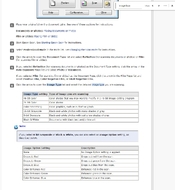Iridium
Member
Hello,
I'm a bit confused & need help.
I scan my b&w negatives in an EPSON V700 Photo with the Silverfast 9 SE. SE version doesn't have the option of 16 bit. Therefore, my question is: how do I get the best depth output?
1. Choosing 48->24 bit & then converting in Photoshop to Grayscale & 16 bit. Do I gain anything?
2. Choosing the 16 bit HDR Raw & then inverting it in Photoshop.
3. or directly the 16->8 bit.
I'm a bit confused & need help.
I scan my b&w negatives in an EPSON V700 Photo with the Silverfast 9 SE. SE version doesn't have the option of 16 bit. Therefore, my question is: how do I get the best depth output?
1. Choosing 48->24 bit & then converting in Photoshop to Grayscale & 16 bit. Do I gain anything?
2. Choosing the 16 bit HDR Raw & then inverting it in Photoshop.
3. or directly the 16->8 bit.








